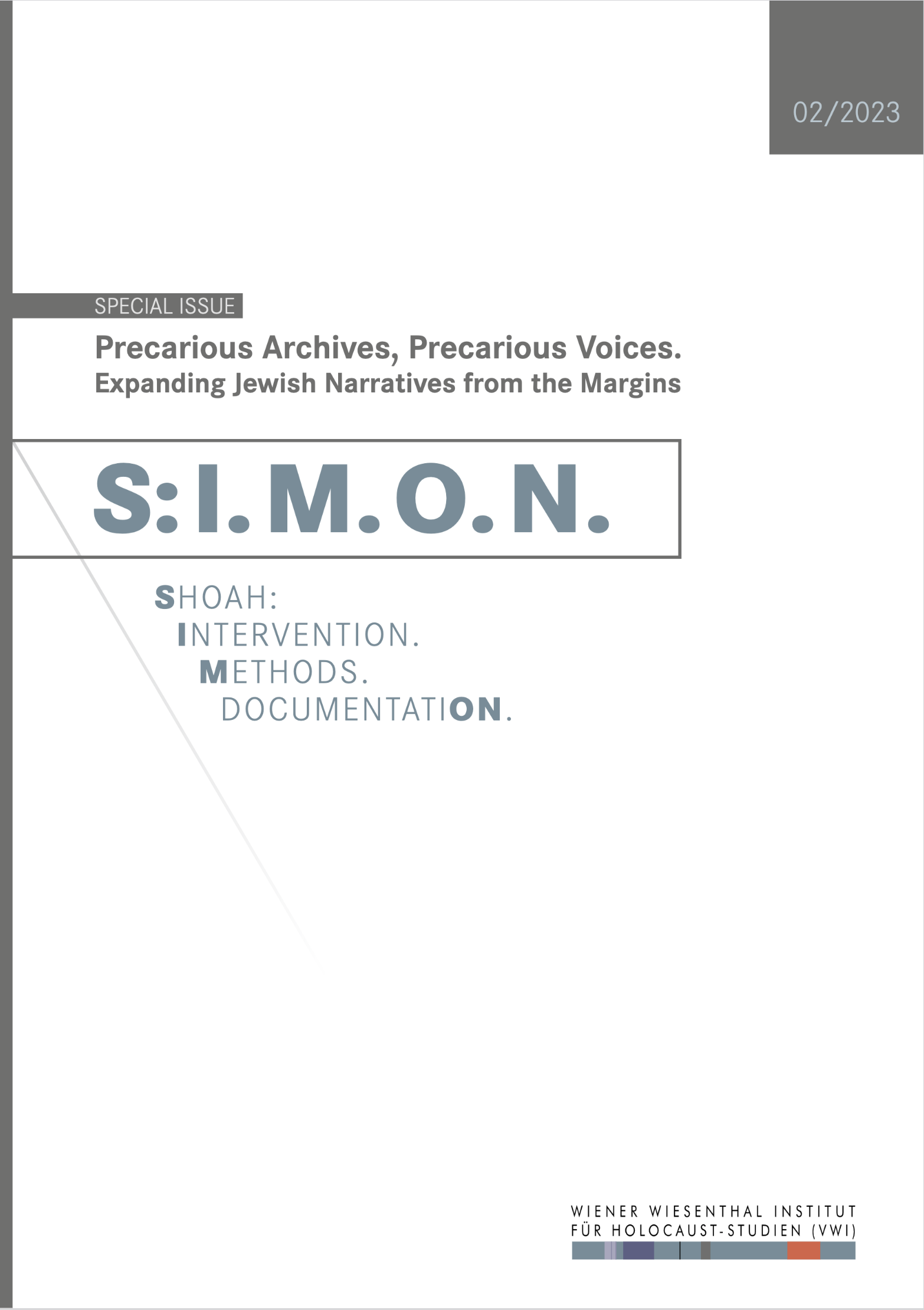Collecting Personal Material of the Hungarian Holocaust. Frameworks, Practices and Institutionalisation. A Historical Overview
Collecting Personal Material of the Hungarian Holocaust. Frameworks, Practices and Institutionalisation. A Historical Overview
Author(s): András Szécsényi, Heléna HuhákSubject(s): History, Jewish studies, Museology & Heritage Studies, Recent History (1900 till today), History of Judaism, WW II and following years (1940 - 1949), Post-War period (1950 - 1989), History of Antisemitism
Published by: Wiener Wiesenthal Institut für Holocaust-Studien
Keywords: collection; Holocaust in Hungary; Holocaust memory; museum;
Summary/Abstract: The ambivalent attitude of socialist memory politics towards the Holocaust during János Kádár’s regime (1956–1989) is reflected in the history of personal collections. Although museums did collect Holocaust memorabilia, this was not encouraged or publicised. Because of such delayed and restrained collection, the objects relating to persecution are mostly to be found in family homes. Since the end of socialism did not change this attitude, the contemporary memorial landscape of the Holocaust covers not only the institutions dedicated to the history of persecution but also the (second- and third-generation) survivors’ homes. On the other hand, the public collection of the victims’ documents – albeit in an incomplete, unprofessional, and politically motivated manner – had already been established during the Kádár era, and within the framework of a non-Jewish, party organisation. In this paper, we will attempt to describe the activity of the Committee for Persons Persecuted by the Nazis (Ná-cizmus Üldözötteinek Bizottsága, NÜB), the first organisation to specifically collect Holocaust memorabilia. Through examples, we will show the extent to which privately owned personal material traces contributed to the building of public collections in the post-communist period. The study particularly focusses on the collecting strategies and practices of the post-1990 Hungarian Auschwitz Foundation (Magyar Auschwitz Alapítvány) and the state-run Holocaust Memorial Center (Holokauszt Emlékközpont, HE), thus completing the institutionalisation process of Holocaust-related materials. We argue that the post-war era’s memory politics and memory processes, mainly in the 1960s and 1980s, influenced both the biography of the objects and the histories of the world around them. Therefore, through the stories of the objects, we can better understand the relationship between institutional and personal memory. We seek to answer the question of what happened to the tangible heritage of the Holocaust during the Kádár era and how the survivors related to their preserved objects in the 2010s.
Journal: S:I.M.O.N. Shoah: Intervention. Methods. Documentation.
- Issue Year: 10/2023
- Issue No: 2
- Page Range: 111-132
- Page Count: 22
- Language: English

